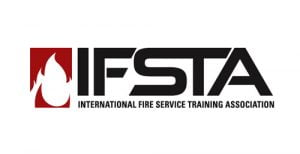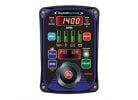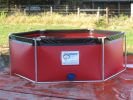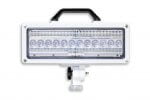Hazardous Materials for First Responders, 5th Edition
The focus of this manual is hazardous materials initial operations. This NEW text meets NFPA 1072, Standard for Hazardous Materials/Weapons of Mass Destruction Emergency Response Personnel Professional Qualifications, 2017 Edition.
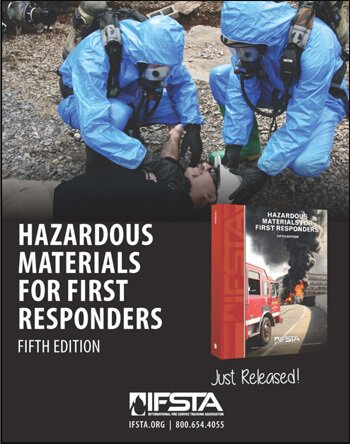
ALL NEW
BE READY
For Hazardous Materials and WMDIncidents
Take appropriate initial actions at WMD incidents and hazardous materials spills or releases with this ALL NEW edition.
The focus of this manual is hazardous materials initial operations. This NEW text meets NFPA 1072, Standard for Hazardous Materials/Weapons of Mass Destruction Emergency Response Personnel Professional Qualifications, 2017 Edition.
Awareness and Operations
MISSION SPECIFIC RESPONSIBILITIES
- Personal Protective Equipment
- Decontamination
- Evidence Preservation and Sampling
- Product Control
- Detection, Monitoring, and Public Safety Sampling
- Victim Rescue and Recovery
- Illicit Laboratory Incidents
CORRELATION MATRIX FOR 1072 AND 472
Appendix A is a Correlation Matrix for NFPA 1072 JPR’s and NFPA 472 competencies. Students and instructors can easily locate material in the text associated with each JPR and competency.
KEY FEATURES OF THETEXT
- Learning objectives
- Case Studies to focus student learning
- Key Terms and definition highlighted
- Warning and Caution Boxes emphasize safety
- Review Questions at the end of each chapter
- 40 skill sheets provide step-by-step instructions for crucial skills.
TEACHING AND LEARNING SUPPORT PRODUCTS
Curriculum
- Plan of Instruction
- Syllabus
- Lesson Outlines for all chapters and certification levels
- Digital presentations corresponding to all lesson outlines
- Clip Art for the manual
- Quizzes and answer keys: 237 Quiz Questions
- Tests and answer keys in Exam View: 650 Test Questions
COMING SOON!
Exam Prep
Workbook
40 Skills Videos
Interactive Course
Companion App
Certification Test Bank
CHAPTER LIST
Awareness
1. Introduction to Hazardous Materials
2. Analyzing the Incident: Recognizing and Identifying the Presence of Hazardous Materials
3. Implementing the Response: Awareness Level Actions at Hazmat Incidents
Operations
4. Analyzing the Incident:Identifying Potential Hazards
5. Analyzing the Incident: Predicting Behavior and Identifying Containers
6. Planning the Response: Identifying Action Options
7. Implementing and Evaluating the Action Plan:Incident Management and Response Objectives and Action Options
8. Implementing the Response: Terrorist Attacks,Criminal Activities, and Disasters Operations and Mission-Specific
9. Implementing the Response: Personal Protective Equipment
10.Implementing the Response: Decontamination Mission-Specific
11. Implementing the Response: Mission-Specific Detection, Monitoring, and Sampling
12. Implementing the Response: Mission-Specific Victim Rescue and Recovery
13.Implementing the Response: Mission-Specific Product Control
14. Implementing the Response: Mission-Specific Evidence Preservation and Public Safety Sampling
15. Implementing the Response: Mission-Specific Illicit Laboratories
APPENDICES
A. Chapter and Page Correlation to NFPA Requirements
B. OSHA Plan States
C. Sample Written Guideline
D. U.N. Class Placards and Labels
E. GHS Summary
F. Color Codes for Incident Command Positions
G. Field Screening Matrix
NEW EDITION UPDATES
- Meets NFPA 1072 JPR’s, uses 1072 language and follows 1072 JPR sequence
- Uses updated and current best practices
- Hazmat behavior directly tied to container type and hazard class
- Container recognition based on the contents of the container for better understanding of hazmat behavior and hazard recognition based on containers types (for example, pressure containers are likely to BLEVE if involved in fires).
- This provides better fundamental hazard recognition to determine the type of PPE or product control techniques needed for liquid-holding containers vs pressure containers, depending on the hazard class involved
Uses the “Three Mechanisms of Harm” (energy release, corrosivity, and toxicity) instead of TRACEM model to explain risk/threat of hazmat - Warning and Caution boxes added for hazards associated with container types and hazard classes
Emergency Response Guidebook information updated to 2016 edition - Placard, labels, and markings now include DOT Chart 15
- Additional graphics illustrate difficult concepts related to hazmat behavior and chemical and physical properties
- More pictures of containers, and damaged containers
- Information updated to U.S. regulatory changes and changes to other NFPA standards
- Emphasizes avoiding exposure to carcinogens
- Includes gross decontamination at fire scenes
- Intermodal shutoff device added to Product Control chapter
- Evidence preservation and public safety sampling new based on NFPA 1072
- Illicit Laboratory chapter written by a law enforcement officer
- Skill Sheets prepared to be more generalized best practices, rather than specific step-by-steps to accommodate differences in agency procedures







